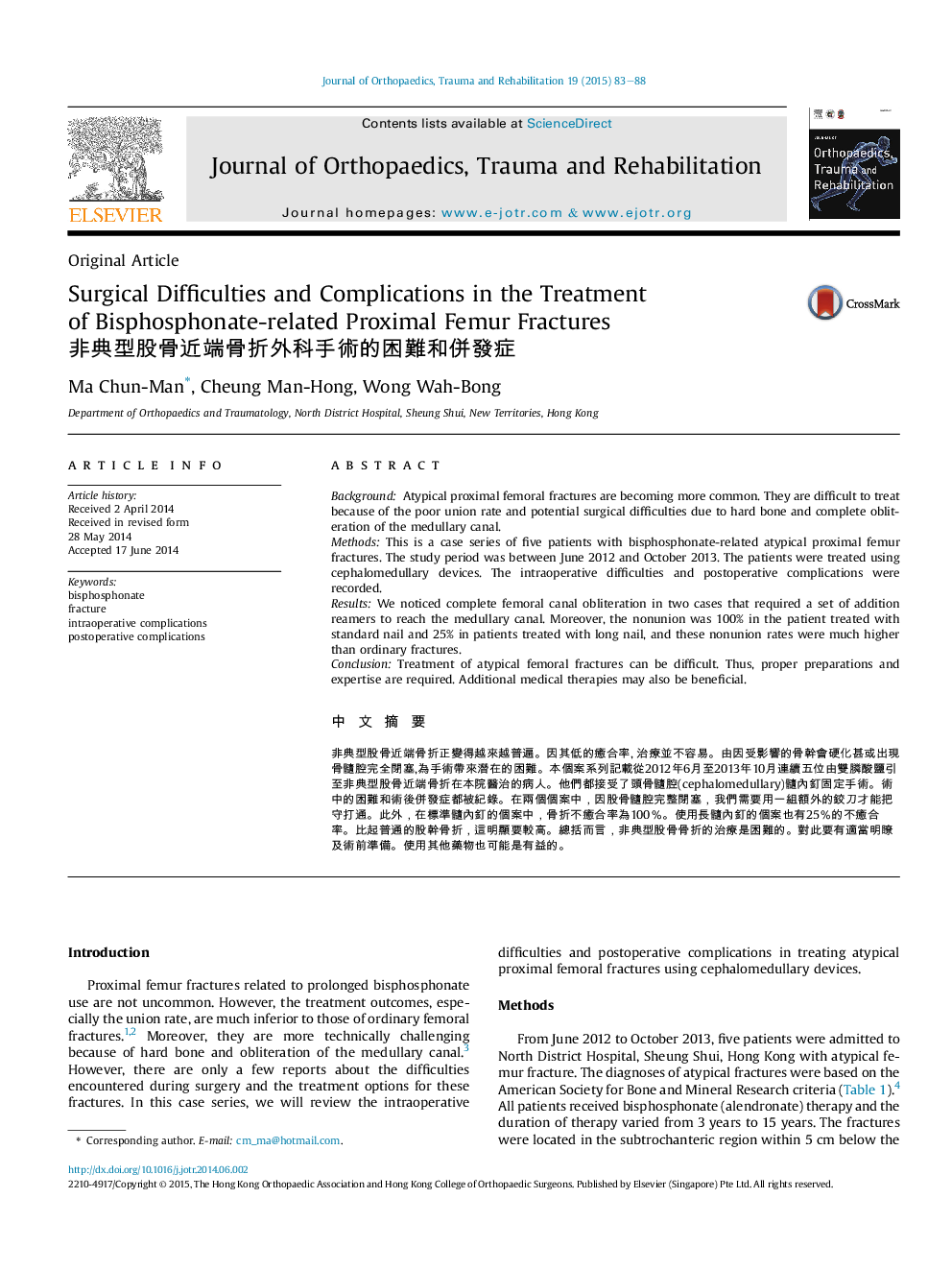| Article ID | Journal | Published Year | Pages | File Type |
|---|---|---|---|---|
| 4072553 | Journal of Orthopaedics, Trauma and Rehabilitation | 2015 | 6 Pages |
BackgroundAtypical proximal femoral fractures are becoming more common. They are difficult to treat because of the poor union rate and potential surgical difficulties due to hard bone and complete obliteration of the medullary canal.MethodsThis is a case series of five patients with bisphosphonate-related atypical proximal femur fractures. The study period was between June 2012 and October 2013. The patients were treated using cephalomedullary devices. The intraoperative difficulties and postoperative complications were recorded.ResultsWe noticed complete femoral canal obliteration in two cases that required a set of addition reamers to reach the medullary canal. Moreover, the nonunion was 100% in the patient treated with standard nail and 25% in patients treated with long nail, and these nonunion rates were much higher than ordinary fractures.ConclusionTreatment of atypical femoral fractures can be difficult. Thus, proper preparations and expertise are required. Additional medical therapies may also be beneficial.
中 文 摘 要非典型股骨近端骨折正變得越來越普遍。因其低的癒合率, 治療並不容易。由因受影響的骨幹會硬化甚或出現骨髓腔完全閉塞,為手術帶來潛在的困難。本個案系列記載從2012年6月至2013年10月連續五位由雙膦酸鹽引至非典型股骨近端骨折在本院醫治的病人。他們都接受了頭骨髓腔(cephalomedullary)髓內釘固定手術。術中的困難和術後併發症都被紀錄。在兩個個案中,因股骨髓腔完整閉塞,我們需要用一組額外的鉸刀才能把守打通。此外,在標準髓內釘的個案中,骨折不癒合率為100%。使用長髓內釘的個案也有25%的不癒合率。比起普通的股幹骨折,這明顯要較高。總括而言,非典型股骨骨折的治療是困難的。對此要有適當明瞭及術前準備。使用其他藥物也可能是有益的。
